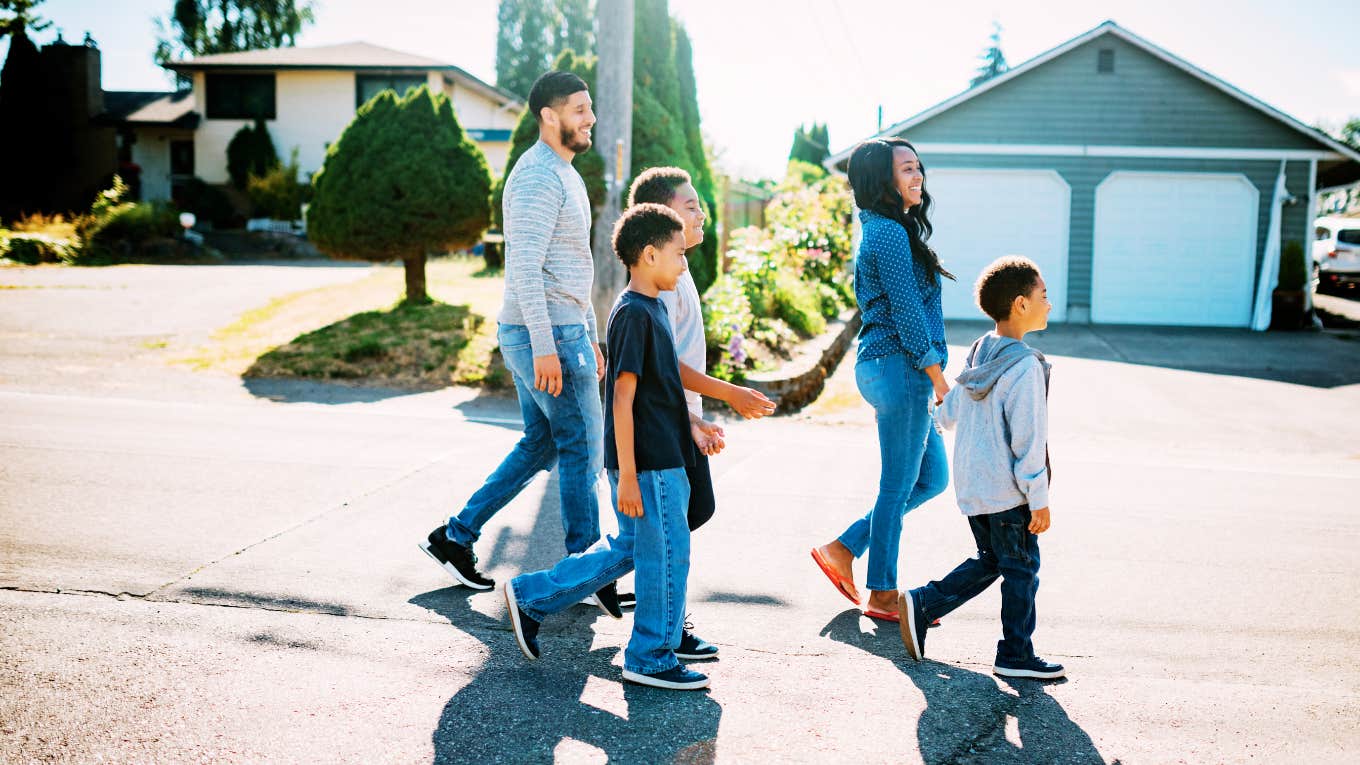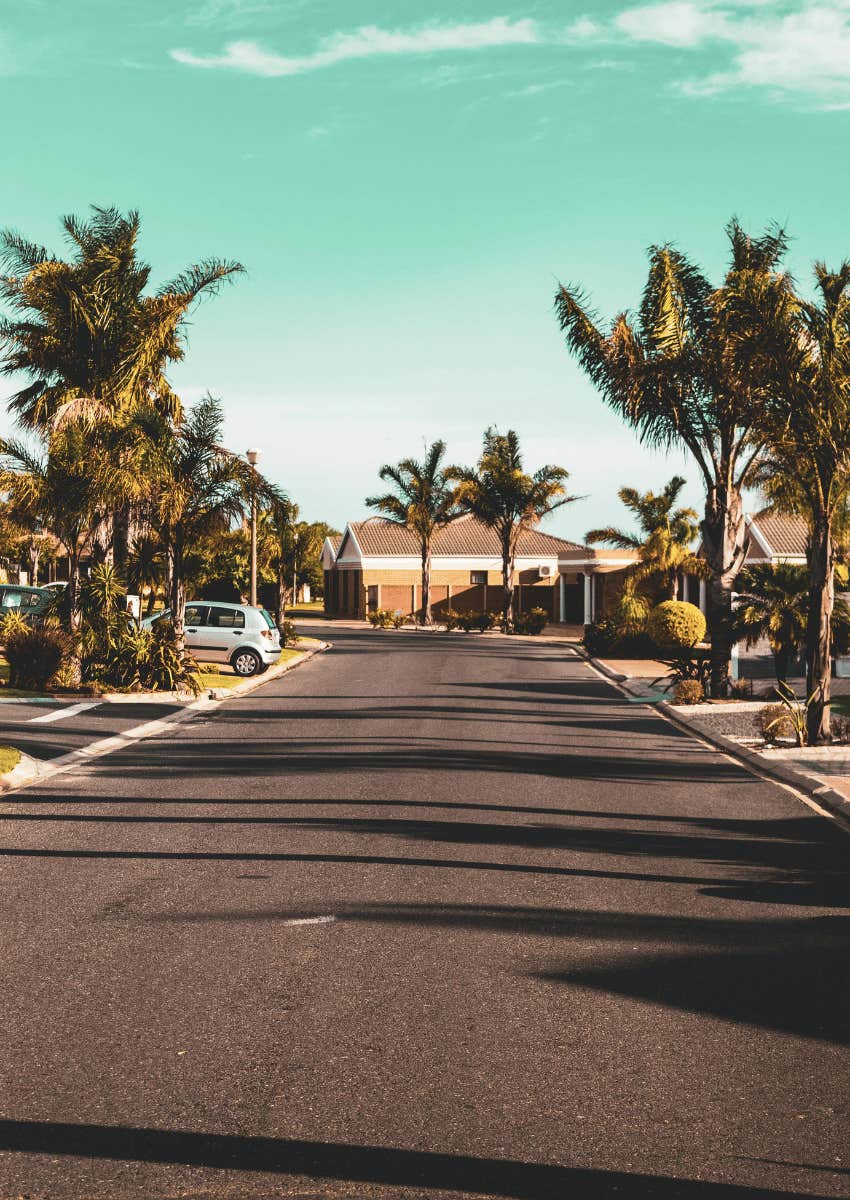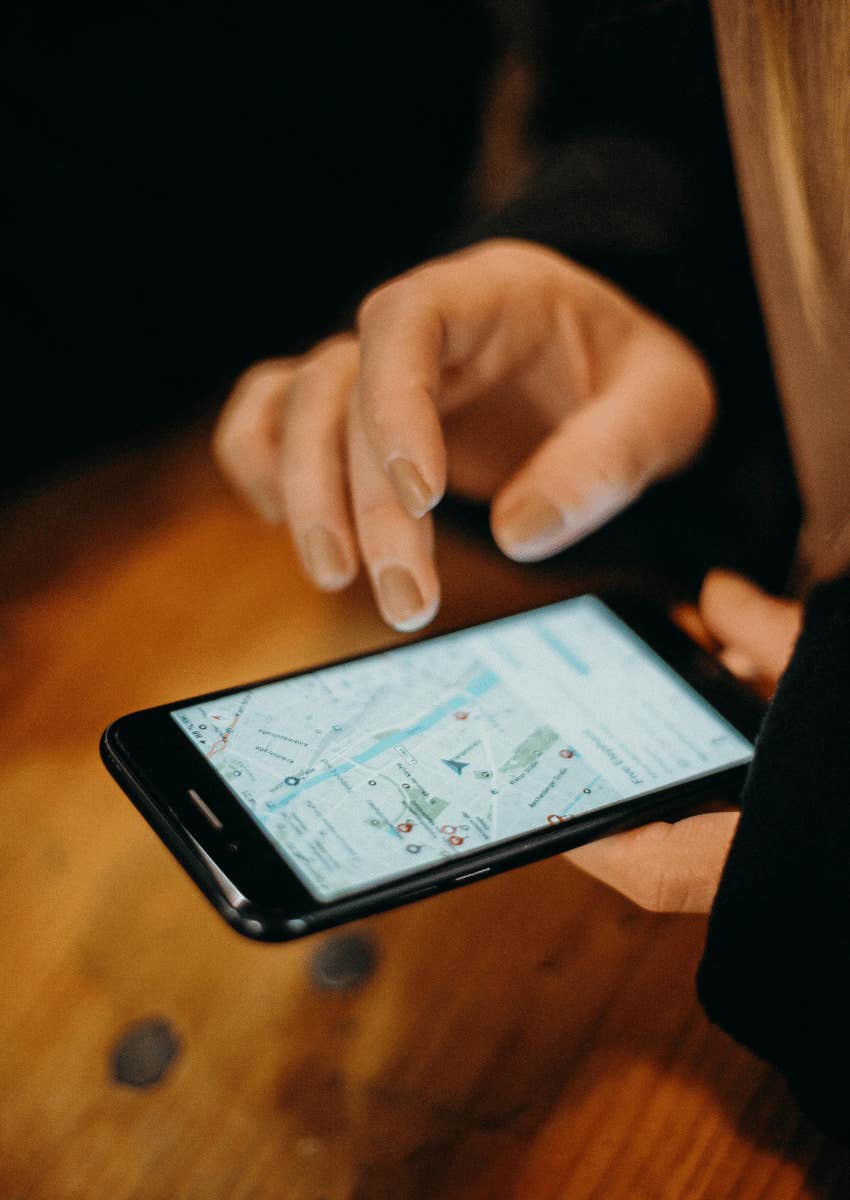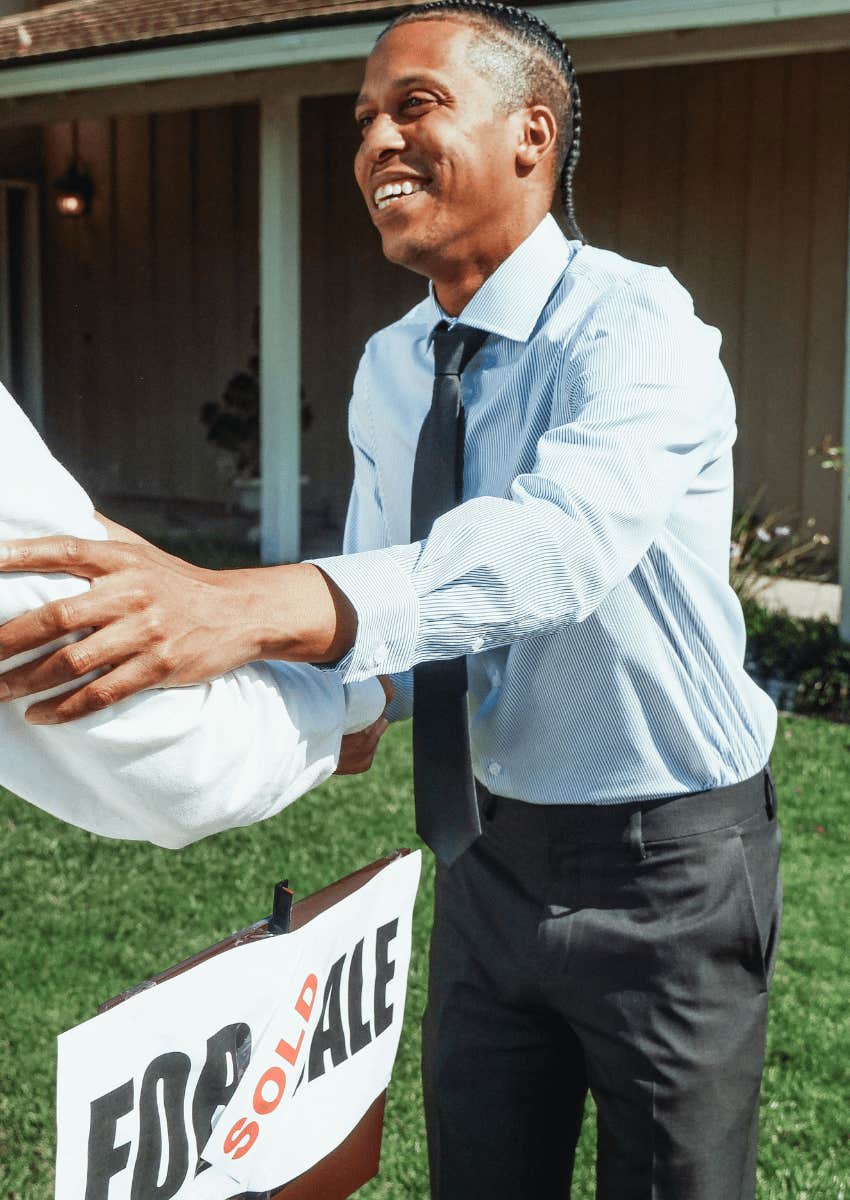The Suburbs Are Making A Comeback — Have We Learned Nothing?
We need villages. We don't need more cars, more subdivisions, or more strip malls.
 Ryan Lane | Canva
Ryan Lane | Canva In the Salt Lake Valley, the world is humming merrily along. The belches and clatters of machines fill the air — the sounds of Inevitable Progress. Housing developments bloom, seemingly overnight, springing from expanses of rock and dirt and tumbleweed.
My children’s father grew up in the Avenues of Salt Lake City, a quiet urban neighborhood with sidewalks and tall, shade-casting trees. His mother rented a string of one-bedroom apartments until she could finally afford a home to call her own. Homes within the city limits were beyond her reach, as they are for so many of us, so she moved to a suburb. Then to another suburb. Then to another suburb after that.
The suburbs that bleed from the southern perimeter of Salt Lake City all look more or less the same.
There are wide, treeless, multi-lane roads, illuminated at night by the glare of fast-food drive-throughs. There are big box stores with their vast parking lots, the continuous procession of cars that scuttle from one to the next. There are the empty stretching residential streets lined with too-new houses and too-small trees, and the people inside, nearly always inside, basking in their square footage, surrounded by All Their Things.
Like my children’s father, I grew up in an urban neighborhood where people walked places. The streets were just wide enough for two cars to comfortably pass one another and each house was its unique entity, a different color, style, and height from the house next door. My childhood neighborhood had a settled feeling, like an old-growth forest, a place where roots had been laid. The ecosystem evolved over the years, but the changes were steady and layered. An old house decaying over there, a new house sprouting here.
The neighborhood where my children’s grandmother now lives reminds me of the reforested areas I sometimes see on hillsides that have been logged — tidy rows of trees, all the same height, the same breadth, the same distance apart. It both looks like a forest and doesn’t look like a forest. Your brain tells you it’s a forest because it’s a cluster of trees, but your brain also tells you that something is … off.
 Myburgh Roux | Pexels
Myburgh Roux | Pexels
Whenever I spend a stint in the suburbs, my brain can’t shake a persistent feeling of unease.
My boyfriend’s parents lived on Peach Tree Lane, and I tried to convince myself that there was nothing wrong with this quiet street with this lovely name, which may or may not have boasted peach trees.
Then I went for a run — back in the days before GPS-enabled smartphones — and I got lost amongst all the various lanes paying tribute to various fruit trees, and all the streets and houses looked the same.
Every time I turned a corner, I was sure I’d come across the right street, because it looked exactly like the street where my boyfriend’s parents lived, and I felt an initial wave of certainty and recognition, only to be overwhelmed by a second wave of disorientation and alarm, like that moment when someone you’re certain you know turns around and the face you see is not at all the face you’re expecting to see.
As I became more panicked, I began to wonder where all the people were. Did this neighborhood have a heart where residents gathered? Did anyone roam the streets on foot? I staggered blearily through the suburban dystopia that looked suddenly menacing in its sameness, its emptiness, and by the time I happened upon my boyfriend’s parents’ house, I had almost managed to convince myself that the apocalypse had taken place somewhere around mile three and I was the last human left on Earth.
Years later, I would embark upon another run in another suburb — this time in Utah during a visit to my children’s grandmother.
I didn’t get lost, but I did find myself stranded on a corner at a vast intersection where two multi-lane roads crossed and cars barreled past, looking very self-important. This time, I did have a GPS-enabled phone, which assured me that there was a coffee shop on the other side of the street. As my children’s grandmother is Mormon and had no coffee in her house, I was on a mission to get my caffeine fix. But every time the light turned green, ostensibly to let me cross, the cars that had been waiting with me shot ahead to turn left.
Google was optimistically trying to give me walking directions, but it should have simply informed me that people don’t walk there. It should have told me that there are no sidewalks, no crosswalks, no pedestrian signals. Even when I finally got up the nerve to make a run for it, I still had to thread my way through various parking lots to locate the shop. I was the only one who ventured inside on foot; everyone else was waiting at the drive-through.
 cottonbro studio | Pexels
cottonbro studio | Pexels
A decade later, there is simply more of everything — sprawling streets, barreling cars, glowing drive-throughs, hulking big box stores.
Since each new subdivision is still designed for cars and consumption, people get in their cars and consume. There are half-hearted attempts at parks, which are treeless and empty and shimmer in the summer heat.
As the Great Salt Lake dries up, on track to disappear completely in less than five years, each suburban home boasts an optimistic green lawn, many with automatic sprinkler systems. The homes have no solar panels and the neighborhoods demand cars, at least two per household, because there is no public transportation infrastructure, no pedestrian infrastructure, and no other viable way to get from Point A to Point B. That is unless you’re a lost urban soul on a desperate quest for coffee and want to make a mad dash across a multi-lane road.
When I was growing up, in the 1980s, we were enamored with the suburbs. All the classic movies took place in them, with occasional scenes in the Big Bad Cities, where white men in suits and ties rode elevators in high rises and Black and brown men played music, did drugs, and committed crimes.
Of course, suburbs in one form or another had already existed for years. My parents both grew up in them, one outside Detroit and the other on the outskirts of New York City. But these were both “proper towns” with sidewalks and individually built homes, roaming children and human centers. The trees there cast shade. Along Main Street, stores without parking lots sold most things a family might need. My parents grew up in the 1950s, at the dawn of suburban sprawl, but decades before the invention of the strip mall.
Was it the strip mall that sucked the soul from ensuing suburban subdivisions? Perhaps. The strip mall as we know it originated in Los Angeles and bled outward from there, spreading with particularly spectacular voracity on the fringes of cities, where expanses of land simply begged to be paved.
Cities became cool again during my teenage and young adult years, though I’d always been partial to cities. Correction: I’d always been partial to sleepier urban neighborhoods, like San Francisco’s Inner Sunset, where I grew up; or Washington, D.C.’s Eastern Market, where I spent six years; or Portland’s Montavilla neighborhood, where I currently live. These neighborhoods are like small towns within the city, not too dissimilar from the suburban towns that my parents called home.
But even though the 1990s found us slightly less enamored with suburbs, they still kept sprawling. The frenzy resumed in earnest at the dawn of the 21st century, with suburbs growing three times as fast as cities during its first decade.
Since the pandemic, Realtor Magazine reports that “the number of home buyers shopping nationwide for suburban homes has jumped 42.1%.” With the rise of remote work and the gutting of downtown office buildings, the suburbs just might be staging yet another comeback.
 Kindel Media | Pexels
Kindel Media | Pexels
Here we are, over two decades into the 21st century, fifty years after the first strip mall was spawned, knowing what we know.
Knowing that parents are exhausted and overwhelmed, cut off from the villages that used to make parenthood feasible. Knowing that lifestyles fashioned from cars and consumption and processed foods make us sick. Knowing that when we hunker down inside our houses with our screens, we feel lonely, angry, and sad. Knowing that water sources are drying up, heatwaves are intensifying, and natural disasters are encroaching and if we don’t stop doing what we’re doing, it’s all going to get worse.
But looking at the ever-multiplying subdivisions and strip malls, you’d never guess that we know all this. In the Salt Lake Valley, where the subdivisions and strip malls end, “For Sale” signs pepper the desert, awaiting the next influx of cash, the next wave of concrete and steel. No water? No problem. We’ll find a way to plant lawns.
These suburbs are full of people who just want their shot, a home to call their own, a safe place to raise their children. Who find themselves either stranded on multi-lane roads or barreling down them, not sure how or when to exit, or if anything better awaits them anywhere else.
Some creative minds out there are showing us better ways to live, but by and large, we don’t seem to be listening. There’s Orenco Station, a suburb near my hometown of Portland, that was specifically built to be walkable, to nudge people out of their houses, to encourage human interaction. A decade old, it still has that too-new movie-set feeling that puts me on edge, but it’s a far cry from the vast roads and parking lots that most suburban residents are forced to navigate.
There are parallel efforts underway to reimagine urban downtowns, to create “15-minute cities,” in which most daily needs can be met within a 15-minute walk. There are cooperative affordable housing complexes, mobile home co-ops, resident-owned manufactured home communities — and even a smattering of off-grid communities.
So why oh why are we still building these vapid, isolating, resource-guzzling, health-depleting, mind-dulling Anywhere, USAs? Is it a lack of imagination? A short-term, profit-hungry mentality? An unwillingness or inability to get off the Treadmill of Progress, even though it’s increasingly clear that the treadmill is leading us nowhere, except to our demise?
The suburbs might be making a comeback, but it’s mostly because people who are getting squeezed out of cities see no viable alternative.
Very few of us are crying hallelujah over the grand opening of the newest Jimmy John’s. It’s time to upgrade the suburban model, to fix its many bugs. We’ve been stuck with this tired, broken version for too long.
Kerala Taylor is an award-winning writer and co-owner of a worker-owned marketing agency. Her weekly stories are dedicated to interrupting notions of what it means to be a mother, woman, worker, and wife. She writes on Medium and has recently launched a Substack publication Mom, Interrupted.

